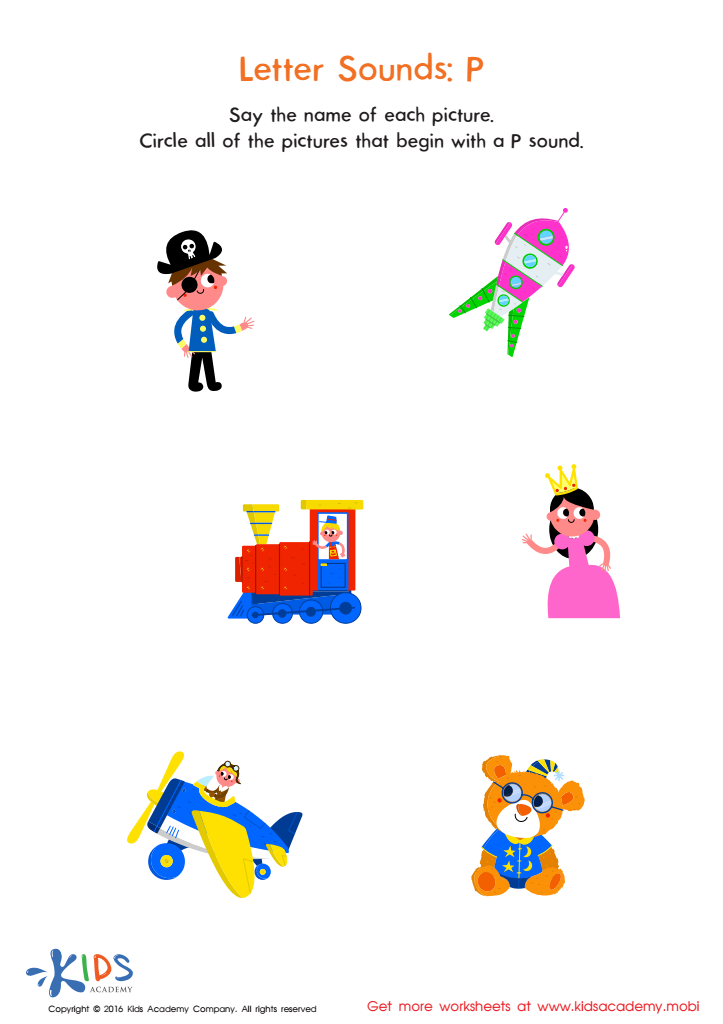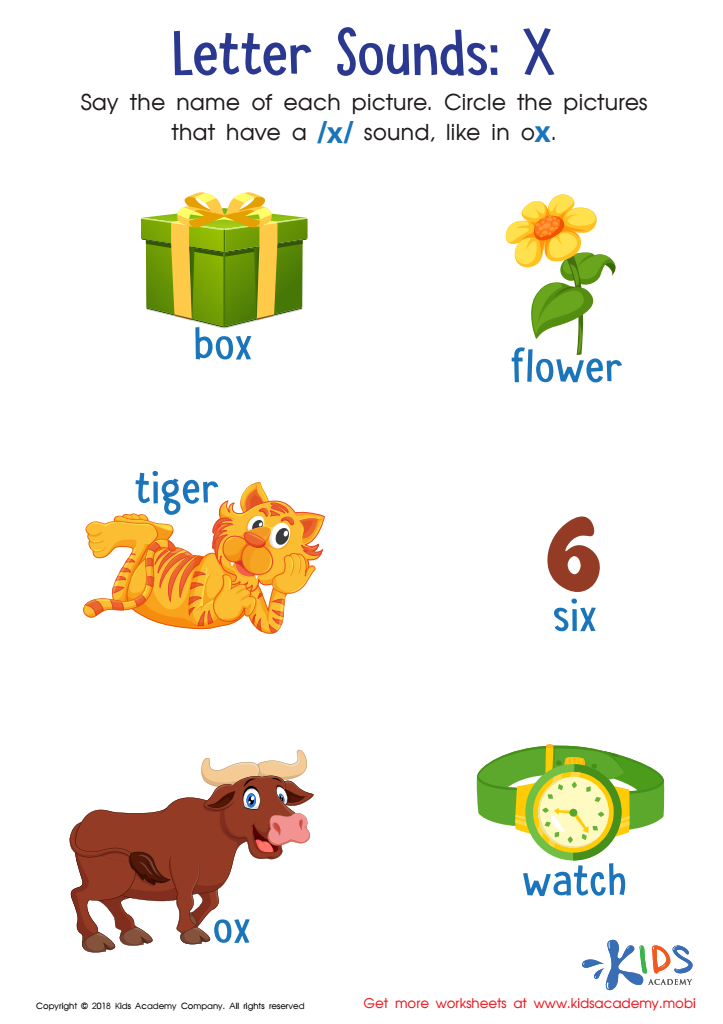Letter Sounds Worksheets for Ages 5-9
31 filtered results
-
From - To
Unlock your child's reading potential with our engaging Letter Sounds Worksheets designed for ages 5-9! These fun and interactive resources help young learners build essential phonemic awareness through various activities, including tracing, matching, and identifying letter sounds. Our worksheets make learning enjoyable, fostering a love for reading while enhancing letter recognition and pronunciation skills. Ideal for home or classroom use, each worksheet aligns with early literacy standards, ensuring comprehensive learning. Boost your child's confidence in reading with our easy-to-follow, visually appealing designs that encourage practice and mastery of letter sounds. Explore our collection today and watch your child's reading journey flourish!


letter sounds Worksheet


Letter Q Sounds Worksheet


Letter K Sounds Worksheet


Letter P Sound Worksheet


Is It m or n? Worksheet


Letter B and C Sounds Worksheet


Letter N and O Sounds Worksheet


Letter V and W Sounds Worksheet


Letter A Sounds Worksheet


What Sound Is it? Worksheet


What Do You Hear? Worksheet


Letter Sounds: J Printable Worksheet


Letter U Sounds Worksheet


Letter F Sounds Worksheet


Choose a Sound Worksheet


Letter H and I Sounds Worksheet


Listen to the Sounds Worksheet


Letter T Sounds Worksheet


Identify the Written Words Worksheet


3 Sounds Worksheet


Letter X Sounds Worksheet


Letter Y and Z Sounds Worksheet


Letter R and S Sounds Worksheet


Let's Count the Sounds Worksheet
Understanding letter sounds is fundamental for children aged 5-9, as it serves as the building block for reading and writing. This stage is critical in developing phonemic awareness, the ability to recognize and manipulate sounds in spoken words. When children learn letter sounds, they can begin to decode unfamiliar words, leading to improved reading fluency and comprehension.
For parents and teachers, fostering this skill is vital. It supports kids in transitioning from pre-reading to reading proficiency, enhancing their ability to express themselves and understand different texts. Children who grasp letter sounds early are more likely to develop a love for reading, contributing to lifelong literacy skills.
Moreover, teaching letter sounds addresses diverse learning styles. Visual learners benefit from seeing letters alongside phonics instruction, while auditory learners improve through sound recognition and repetition. Encouraging letter sound awareness at home and in school creates a supportive learning environment where children can thrive.
Investing time in letter sounds cultivates confidence in young learners, enabling them to tackle more complex literacy challenges ahead. Ultimately, by emphasizing letter sounds, parents and teachers play a crucial role in equipping children with vital skills that lay the groundwork for academic success.
 Assign to My Students
Assign to My Students






















